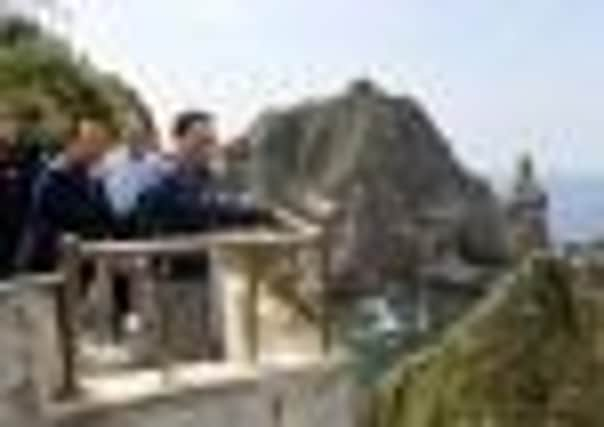South Korean leader makes surprise trip to disputed isles


The provocative move increased diplomatic tensions between the two countries and prompted Japan to recall its ambassador from Seoul.
President Lee Myung-bak’s trip to the tiny, rocky outcrops between the countries was the first by a South Korean president, officials in his office said.
Advertisement
Hide AdAdvertisement
Hide AdThe islands are known as Dokdo in South Korea and as Takeshima in Japan.
It came as Mr Lee’s popularity is dropping and his conservative party jockeys for votes ahead of a presidential election in December. Mr Lee is nearing the end of his single, five-year term and cannot run for re-election.
Japanese prime minister Yoshihiko Noda told reporters the islets are “our sovereign territory”. This is completely unacceptable. It is deeply regrettable.”
He announced that Japan’s ambassador to Seoul was being called back to Tokyo. Japanese officials also called Seoul’s representative in Tokyo to the Foreign Ministry to hear Japan’s complaints.
Mr Lee’s visit came on the eve of last night’s men’s bronze medal Olympic soccer match between Japan and South Korea and ahead of South Korea’s commemoration on Wednesday of the peninsula’s independence in 1945 from 35 years of Japanese colonial rule.
South Korea stations a small contingent of police officers on the disputed islets, which lie approximately mid-way between the two countries, in a show of control. But Japan maintains that the rocks are its territory. Tokyo renewed the claim last month in an annual defence report.
Mr Lee placed his hand on a rock carving that reads “South Korean territory” during the visit to the islands. He also told police officers there that the isles are “worth sacrificing lives for,” according to his office.
Japanese foreign minister Koichiro Gemba strongly protested. “It is incomprehensible why he would make this trip at this time,” Mr Gemba said.
Advertisement
Hide AdAdvertisement
Hide AdThe largely uninhabited islets surrounded by fish-rich waters have long been a source of discord, even though Japan and South Korea are strong US allies, share vibrant trade and tourism ties and are partners in diplomatic efforts to persuade North Korea to abandon its long-range missile and nuclear arms programmes.
Last month, Japan filed a formal diplomatic protest with South Korea after a man rammed his truck against the gate of the Japanese embassy in Seoul to protest against Japan’s claim to the islands.
Such territorial disputes and historic rows blight the relationship between the two countries. Many people on the Korean peninsula harbour deep resentment, stemming from Japan’s brutal colonisation.
South Korea and Japan also remain at odds over what many South Koreans say is Japan’s failure to properly address its past actions, including its Second World War era use of Korean women as sexual slaves for its soldiers.
In late June, after a political outcry in South Korea, Seoul and Tokyo put on hold an intelligence sharing pact that had been seen as a breakthrough in their relations.
South Korean activists last year placed a statue of a girl representing victims of Japanese sexual slavery in front of the Japanese Embassy in Seoul. Japanese officials have apologised, but Tokyo has refused demands from individuals for reparations, saying the matter was solved by international peace treaties.
US State Department spokesman Patrick Ventrell expressed hope for good relations between the two key US allies after being asked about Mr Lee’s visit.
Last year, Seoul banned three conservative Japanese lawmakers from entering South Korea after they arrived at a Seoul airport with announced plans to travel near the islets.